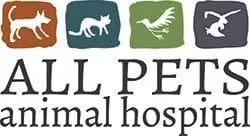Adipokinesis – the BIG FAT Problem
by Juliette Veenstra-Walters, RVT
 Most clients have heard from one source or another
that obesity is a common problem in pets. In fact according to a recent survey, despite the efforts of pet professionals, pet obesity is actually on the rise. Today, obesity is
one of the most common disorders in veterinary medicine, and its detrimental effects are numerous. The fact is, excess body fat shortens pets’ lives.
Most clients have heard from one source or another
that obesity is a common problem in pets. In fact according to a recent survey, despite the efforts of pet professionals, pet obesity is actually on the rise. Today, obesity is
one of the most common disorders in veterinary medicine, and its detrimental effects are numerous. The fact is, excess body fat shortens pets’ lives.
The causes behind the pet obesity epidemic are varied. First off, we are so used to seeing overweight pets that many owners don’t recognize the problem when they see it. Additionally, pet food companies tend to far overestimate the feeding recommendations for pets, while modern pets tend to be for more sedentary than they should be. Finally, we LIKE feeding our pets (seriously, who can resist that face?).
The problem is inflammation
Pun intended. Many of the problems related to overweight pets (and people) are a result of inflammation. Body fat is not simply a static part of the body, it is an active organ that communicates with other organs by secreting hormones and protein factors known as adipokines. Adipokines send signals to other parts of the body, triggering physical responses. One of the most concerning responses is Adipokineschronicinflammation.
In its acute form, inflammation serves many vital roles in the body as the first response to injury, illness and stress. It facilitates healing of injuries and is a necessary part of keeping a body running optimally.
In its chronic (long-term ongoing) form however, inflammation can be a dangerous thing. Studies have linked chronic inflammation to depression, cancers, chronic obstructive pulmonary disease (COPD), heart disease, and decreased immunity. Additionally, chronic inflammation can play a role in skin conditions, arthritis (an inflammatory process by itself), and myriad other disease processes. Finally, when inflammation is running in this chronic state, it may be less “sensitive” to acute conditions, where inflammatory processes are necessary.
Excess body fat produces unhealthy amounts of adipokine factors, resulting in a chronic (and unhealthy) state of inflammation in both pets and people. The result can be a significantly shorter and less healthy life for the overweight individual. In fact, a 14-year study by Purina revealed that Labradors lived an average of 2 years longer if they were kept at or just below optimal weight. On a breed known to live an average of 12 years, this means a 17% longer life for our best friend. We also know that this extra time is likely to be happier, as it is fraught with fewer health concerns and fewer chronic problems such as arthritis (which can be severely exacerbated by excess weight).
Recognizing obesity
While overweight pets have become commonplace, recognizing the problem is not complicated.
Dogs and Cats:
 Visually: both dogs
and cats should have a recognizable “waist.” If you look at your pet from above, you should be able to see a tapering girth behind the ribcage. Looking at your pet from the side, you
should see a notable tapering from the deepest part of the chest to just in front of the rear legs. While the amount of tapering can vary a bit with breed and build, all dogs and cats
will have a waistline at a healthy weight. <PIC>
Visually: both dogs
and cats should have a recognizable “waist.” If you look at your pet from above, you should be able to see a tapering girth behind the ribcage. Looking at your pet from the side, you
should see a notable tapering from the deepest part of the chest to just in front of the rear legs. While the amount of tapering can vary a bit with breed and build, all dogs and cats
will have a waistline at a healthy weight. <PIC>
By touch: On thick coated pets, visualizing the waistline can be a challenge. Another easy way to determine your pet’s excess bodyfat is by touch. With your
hands lightly pressing on the side of your pet’s chest, gently rub your fingers back and forth over the ribs. Can you feel them? If not, or if you have to press to feel
the ribs, your pet is carrying excess weight!
Try this: With one hand, make a fist and softly run the index finger of your other hand over the bones on the top of your fisted hand. See how you can easily feel the bones?
That’s how your dog’s ribs should feel with very light pressure. Conversely, if you open your hand, face it palm up and run the fingers of your other hand over the soft pads on your
palm, that’s what the ribs feel like on a very overweight dog or cat (note how hard you had to press to feel the knuckle bones).
NOTE: People often overfeed “burly” breed dogs in an effort to make them look “big.” Even heavily muscled dogs, such as Rottweilers, Pit Bulls, Bulldogs and
“show” Golden Retrievers should have a waistline. Well-muscled breeds carry little muscle or fat over their rib cage, so you should be able to easily feel the ribs in healthy thicker
breed dogs.
Birds:
Birds can be a little tougher to judge due to their feathering and the fact that the easiest way to determine their weight is by feel.
Birds carry a lot of excess weight over their breast muscle. This “flight muscle” runs the length of their chest, on either side of a narrow strip of bone called the keel. On a
bird, the keel bone should be easy to palpate, and the breast muscle should taper off from it, so that the keel bone sticks out slightly (if this bone is too prominent, the bird is
underweight). Overweight birds often have a layer of fat over this muscle, often to where the keel bone is indented into the breast.
Rabbits:
Again, rabbits can be tough to visualize weight due to their thick coat and round posture. Like dogs and cats, owners can often feel over their rabbit's ribs for excess fat.
Additionally, overweight rabbits may have excessively large dewlaps (so large it can interfere with eating and drinking!) and problems with agility and locomotion do to excess tissue.
A yearly wellness exam with a veterinarian will include an evaluation of their overall body condition, at which time the doctor can inform the bunny owner if their pet is overweight.
Helping your Pet reach a healthy weight
There is no mystery to helping your pet reach and maintain a healthy weight. Just like people, it is usually just a matter of calories in, calories out.
Health Check: If you are concerned that your pet is overweight, dealing with the issue should start with the vet. There are a handful of medical causes for
obesity. In dogs, the most common medical cause is thyroid disease. The thyroid is a hormone secreting organ responsible for metabolism. Dogs can be hypothyroid, meaning
this organ doesn’t produce enough hormone, resulting in a slow metabolism (among other things). If a dog is hypothyroid, weight loss will be difficult until the hormone levels are
regulated.
A veterinary visit may also reveal signs of other health problems, such as arthritis, which could make exercise more difficult, impeding weight loss.
Once it is proven that your pet is healthy, you and your veterinarian can devise a plan to get your pet to an optimal weight.
Diet and Exercise: If your pet is otherwise healthy, getting them to lose weight is a “simple” matter of decreasing calorie intake and increasing calorie burn through activity.
- Measure your pet’s food: If you’re not measuring your pet’s food, then weight loss will be a struggle. Get realistic, consistent measurements, and make sure that everyone who feeds the pet is on board with the plan.
- Change the food: Remember that our pets tend to be far more sedentary than they should be. As a result normal foods fed at normal amounts will result in overweight pets. If your pet is significantly overweight, start by changing to a “light” version of the same food.
-
Feed Less: Even if you change to a light food, it is recommended that you decrease the volume of food you are feeding. Even “diet” foods tend to overestimate
their amounts, so start by deducting 25% off of their recommendation.
- Use your pet’s weight as a guide: If your pet is not losing weight on the amount of food offered, it means you need to feed less!
- Exercise More: All pets, regardless of weight, benefit from structured exercise daily. This means more than just playing in the back yard, it means actual scheduled walks (for dogs) and play time (for cats, rabbits and birds). NOTE: if your pet is not used to exercise, start slowly, just as you would for yourself.
- Watch “Treats.” Remember that treats are calories. Often, they are a lot of calories! Limit the number of types of treats offered if your pet is on a weight loss plan. If your pet requires more treats due to a training or behavior program, you may need to adjust their meal volume to account for the treats.
- Weigh Often: Your pet should be weighed regularly to monitor their progress. We recommend at least monthly, if not every two weeks. Remember that the smaller the pet the smaller your weight loss “numbers” will be, but any amount of decrease is a good thing!
Prescription Diets: If your pet is significantly overweight, the fastest way to get weight off is to use a prescription diet made for fast weight loss. It is important that you “stick to the plan” and not allow your pet to cheat or your efforts could be wasted. Once your pet reaches optimal weight, you can move them over to an appropriate maintenance diet.
Rabbits and Pellets: For rabbits, pelleted diets are a convenient source of nutrition, but they are not ideal for a variety of reasons. Pellets do not contribute to optimal gastrointestinal health and they can also contribute to overweight bunnies! Limit your rabbit’s pellet intake while offering as much healthy Timothy Hay as they want.
Birds and Seeds: Remember that a seed-only diet is not only nutritionally incomplete for pet birds, but it is laden with oils and fat. A diet consisting primarily of seeds of “seed mixes” will lead to an overweight, malnourished feathered friend. An ideal diet for pet birds consists of high-quality bird pellets, fresh dark-colored veggies and fruits, whole grains and other healthy fresh foods.
For more information on healthy diets, weight loss diets, or to formulate a weight loss plan, please call our hospital at: (760) 634-2022



